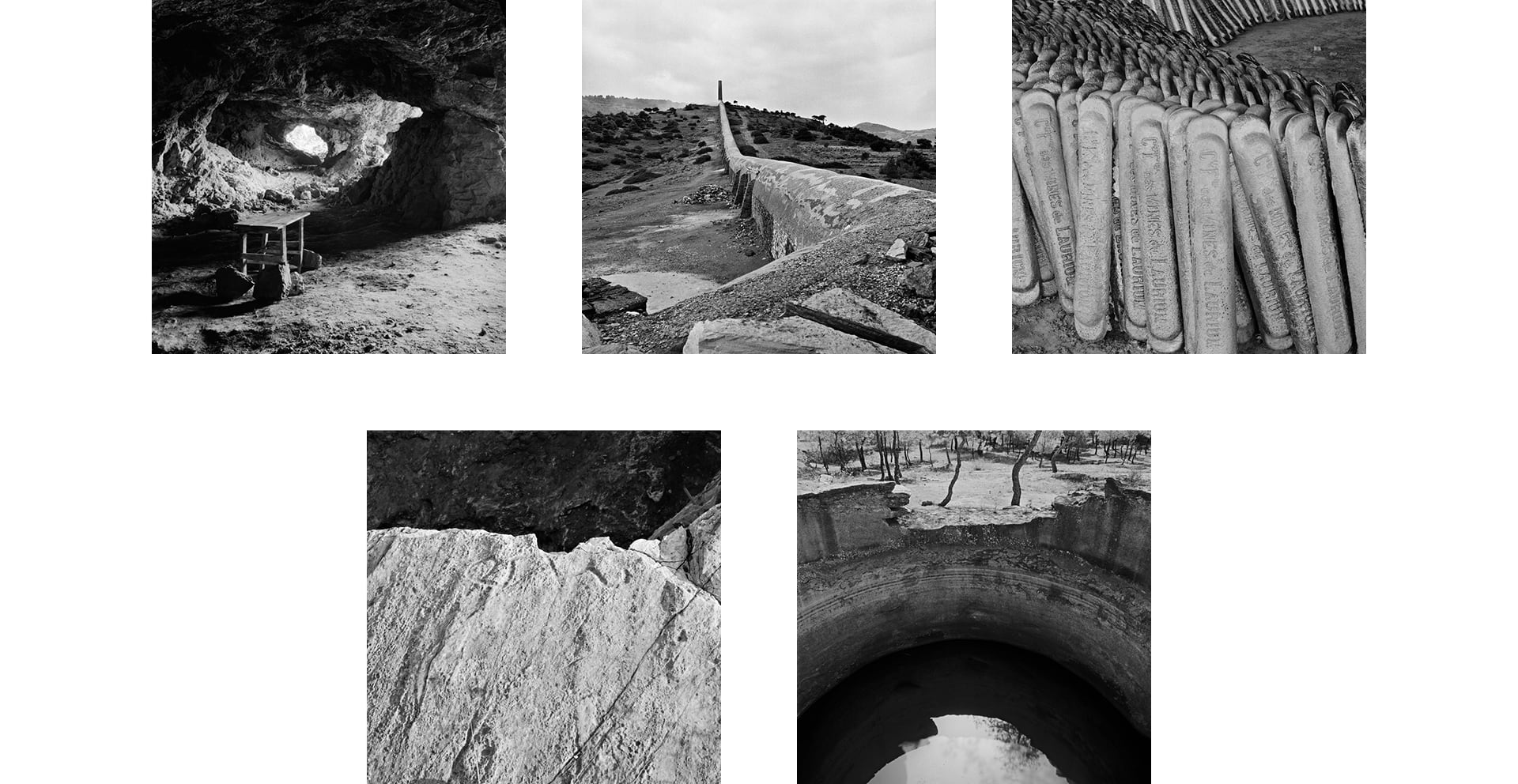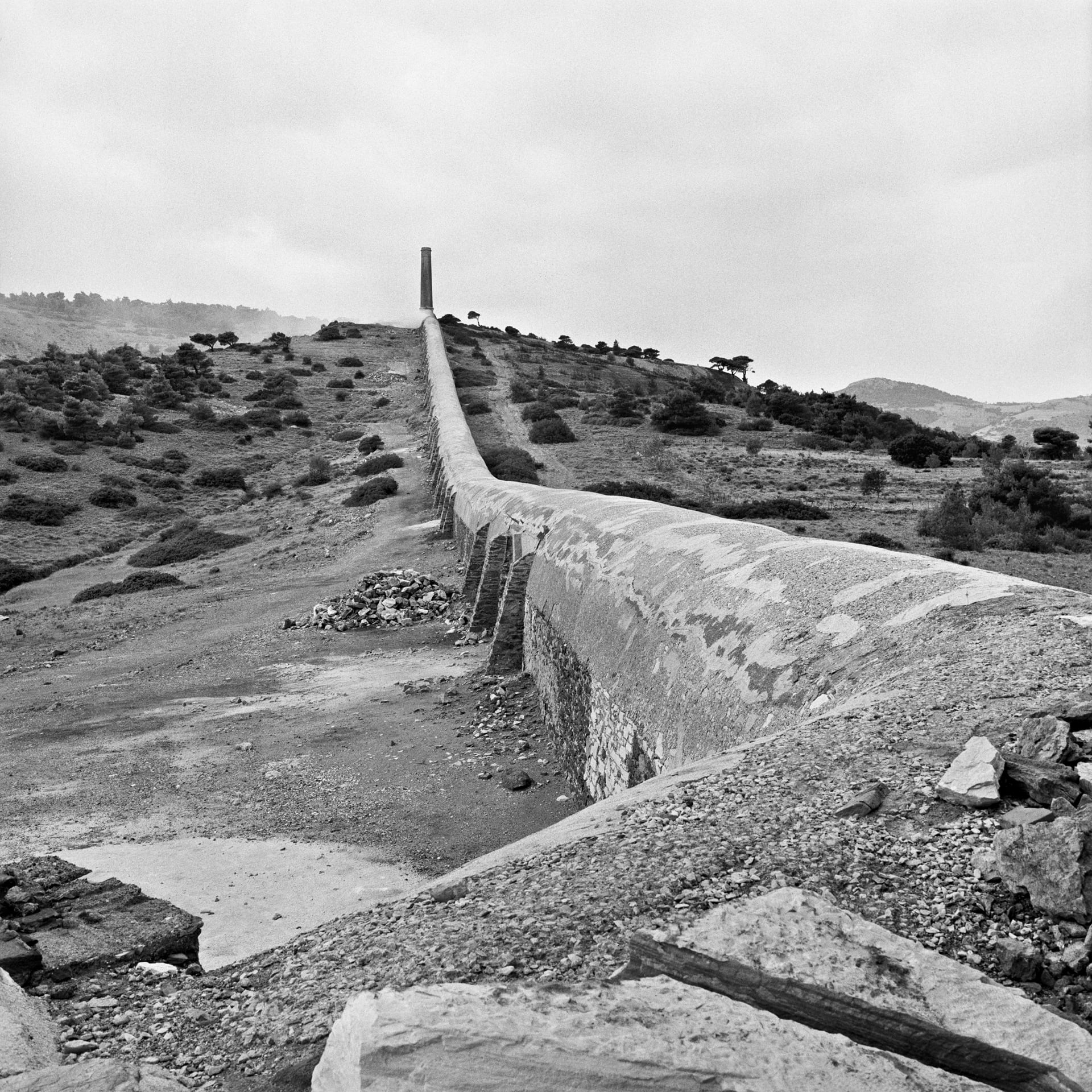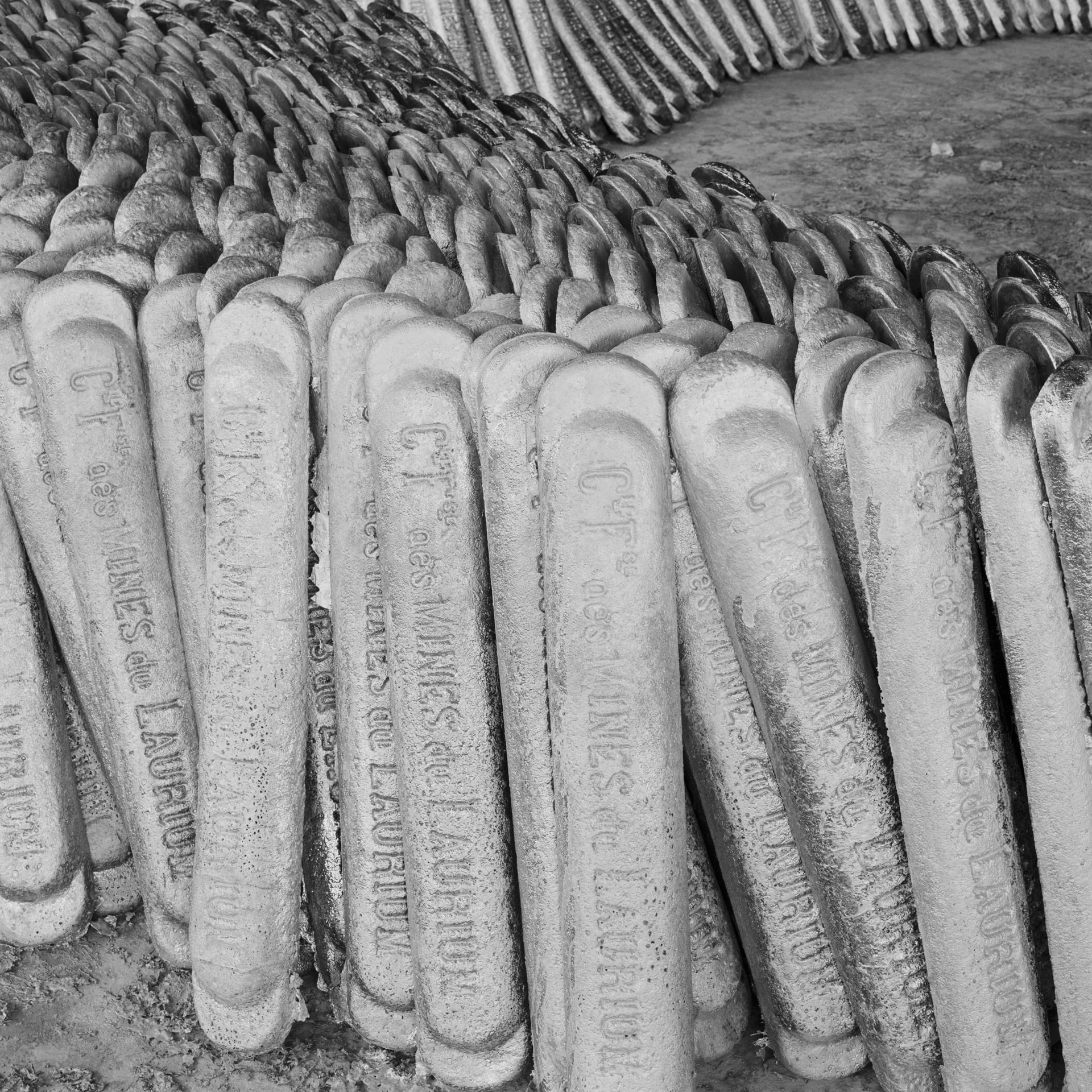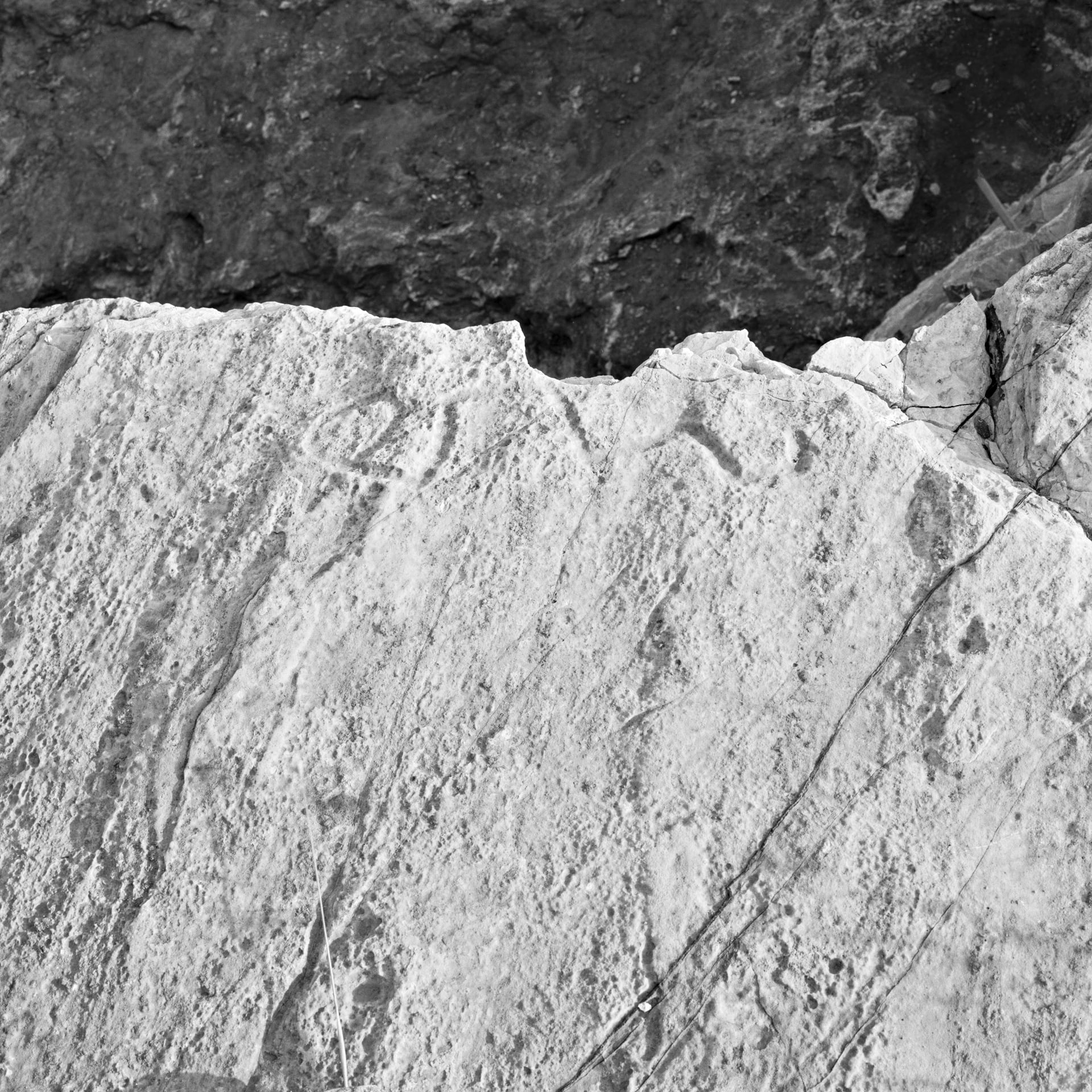1978–1980
Greece – Lavrion Silver
What was the source of the money that financed the Parthenon and Athens’ navy? Who extracted, crushed, and melted the silver ore providing the material for the drachm (standardized at 4.32 grams) and the tetradrachm with Athena and her owl (17.28 grams of silver)—the world currency that had a democratizing effect on the city state of Athens in the 6th and 5th centuries BCE., that under Alexander was minted even in Egypt, and that was circulated as far as away as Bactria and Britain? The answers are to be found in the Lavreotiki area at the southeastern tip of Attica, in the hinterland of Cap Sounion. There, systematic exploitation began as the Neolithic gave way to the Bronze Age and the Cycladic, Minoan, and Mycenaen civilizations had to be supplied with silver, lead, and copper.
This photographic survey records the vestiges of an ancient industrial landscape of mining and metallurgy with roads and trails, galleries and shafts, cisterns and tanks, washing plants that used the difference in gravity to separate heavy ore from lighter rock, as well as kilns, workshops, and living quarters for tens of thousands of slaves. It also covers the last days of the lead works on the site of the Compagnie Française des Mines du Laurium, which from1860 resumed mining at Lavrion, exploiting ancient tailings and slag heaps, making use of ancient shafts, and ultimately extracting the deep ore left behind by the ancient miners.
This reportage was commissioned and published by DU, Zürich, and became part of Metamorphoses. Greek Photographs.
Assignments
- 2010–2018Afghanistan – Glacier Walks in Times of War
- 2012Burma Revisited
- 2009Swat – Mutilated Faces
- 2007Kazakhstan – Oil Great Game in Central Asia
- 2005Turkmenistan – A Journey under Surveillance
- 2004China – Farewell to Kashgar
- 2001–2010Afghanistan – A Thirty Years War
- 2001China – The Transformation of Xinjiang
- 2001Afghanistan – Drought and Famine
- 2000Kashmir – Paradise Lost
- 2000Ulanbataar – Children’s Underworld
- 2000London – Going Southwark
- 1999Indonesia – East Timor: Times of Agony
- 1998–1999Borneo – Destruction Business
- 1998Afghanistan – Economy of Survival
- 1997Cambodia – Quiet Days in Pailin
- 1996Tajikistan – Forbidden Badakshan
- 1995Iran – Roads to Isfahan
- 1994–the presentAngkor – The Mercy of Ruins
- 1994Bangladesh – Sandwip: An Island disappears into the Sea
- 1993Calcutta – Durga Puja
- 1992–1996Indochina – Legacies of War
- 1992Cambodia – Resurrecting a Country
- 1991–1992Burma – Behind the Bamboo Curtain
- 1990Ahmedabad – Cotton Mills
- 1987China – The Pulse of the Earth
- 1978–1980Greece – Lavrion Silver





